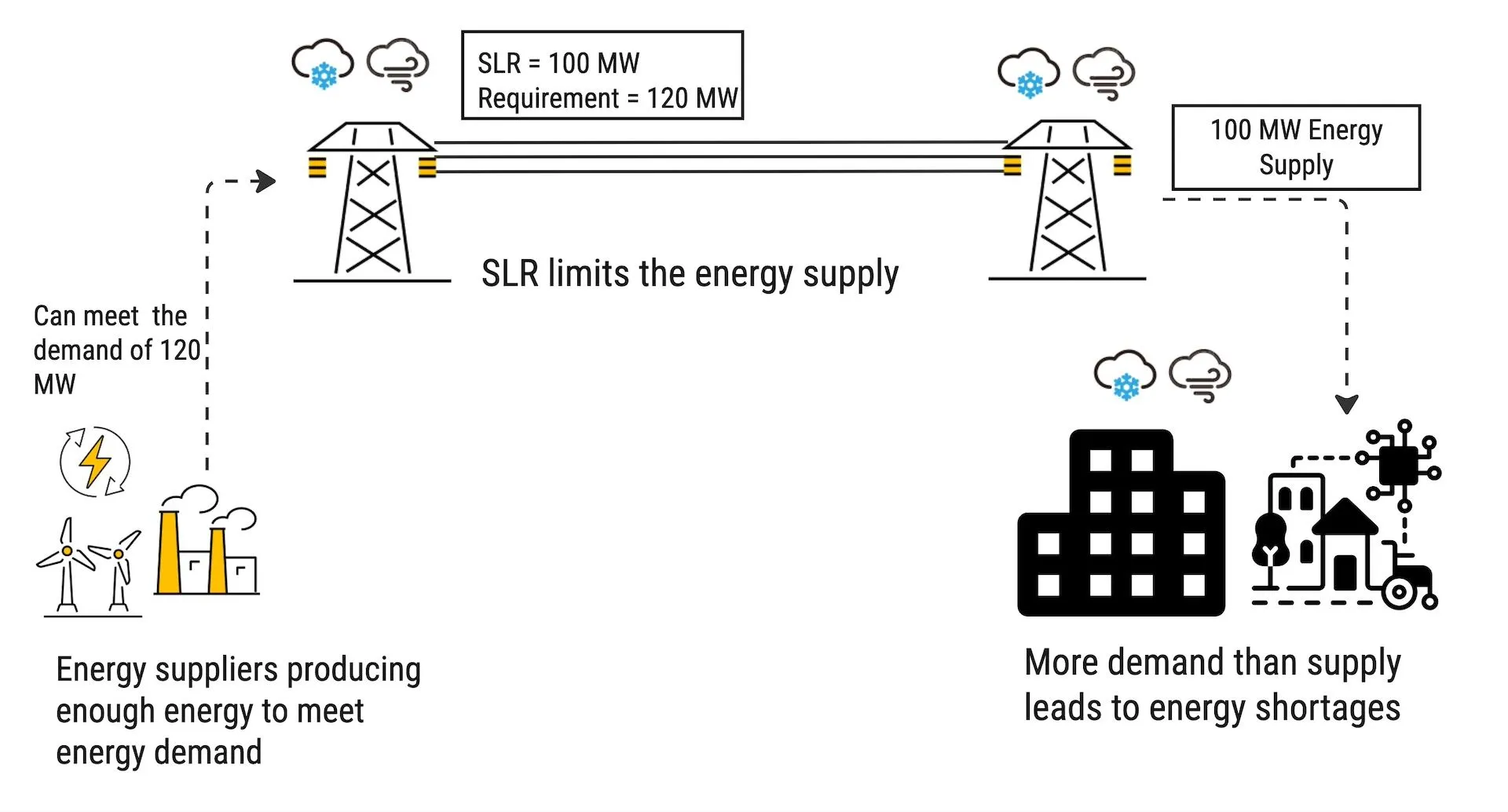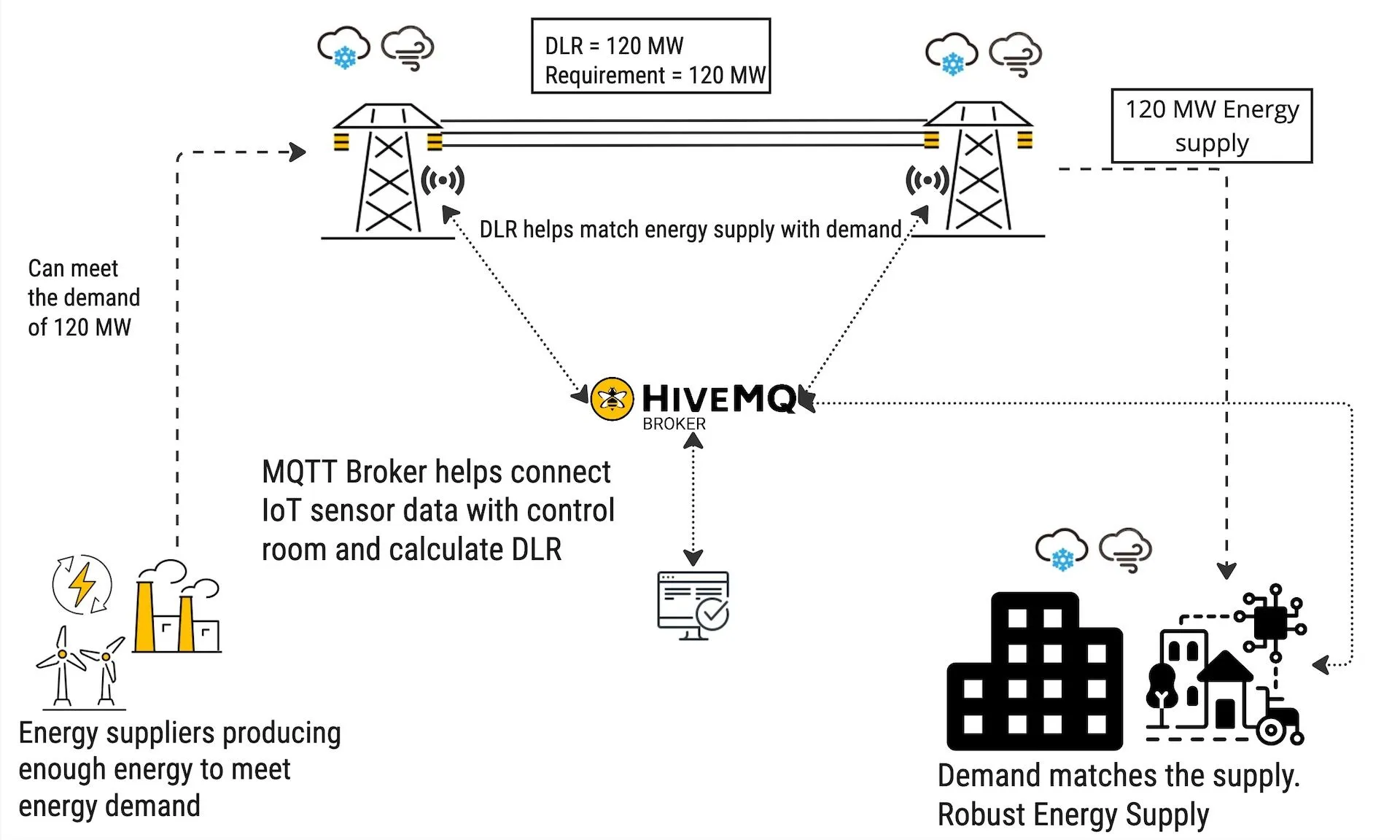Enhancing Grid Capacity with MQTT
Many countries today face the challenge of modernizing their energy infrastructure to meet ever-changing energy demands as reliably and cost-effectively as possible. One promising approach to achieve this goal is via Grid Enhancing Technologies (GETs). According to the Department of Energy report of the US Government, the sum of real-time congestion cost among major U.S. electrical utility system operators in 2016 was $4.8 billion. The congestion costs for 2022 are estimated to be $20.8 billion. Congestion costs for energy utility providers refer to the additional expenses incurred when the demand for electricity exceeds the available transmission capacity in a part of the power grid. This trend highlights a need for optimizing costs without requiring huge infrastructure investments. The potential benefits are significant cost savings to both utility operators and ratepayers, i.e. end consumers of electricity.
What are Grid Enhancing Technologies (GETs)?
Simply put, GETs maximize electricity transmission across the existing system. Adding these technologies helps an electrical transmission system to continue connecting to clean, renewable energy like solar and wind to decarbonize the grid while meeting its energy demands. Because they can quickly enhance existing power grid infrastructure, they also save money and avoid the complexity of building new transmission lines.
The GETs can be briefly classified into the following categories:
Dynamic Line Rating (DLR)
Advanced Power Flow Control
Topology Optimization
Energy Storage Integration
To enable these technologies, grid operators and decision-makers often rely on sensors, smart meters, and monitoring devices that collect real-time data, helping them make informed decisions and respond quickly to grid changes.
This blog post discusses Dynamic Line Rating in detail and highlights how an MQTT platform can be critical to enable such a technology. We will cover the rest of the technologies in follow-up blogs.
Dynamic Line Rating (DLR)
As outlined in the Federal US government’s report, the dynamic line rating is defined as the process of appropriately updating the thermal limits of existing transmission lines based on real-time and forecasted weather conditions. Thermal limits of transmission lines refer to the maximum amount of electrical current that transmission lines can carry before the heat generated exceeds safe levels. Often, these schemes establish new limits that safely allow more energy transfer across existing infrastructure.
To understand DLR, we need to understand Static Line Ratings (SLR) and Ambient Adjusted Line Ratings (AAR).
Static Line Ratings and Ambient Adjusted Line Ratings
A transmission line is designed for the conductors to be operated up to a defined maximum temperature (i.e. its “design temperature”). In the real world, the line temperature is increased by electrical losses (due to the conducted current) and via sunlight. The transmission line is cooled by natural convection, wind, and radiation.
Since the weather conditions change throughout the day and can vary vastly throughout the year, it is possible that the “real” rating of the line is vastly different from the design value.
The Static Line Rating (SLR) is the line rating of a transmission line at the design temperature. This value directly impacts how much electrical energy can be transmitted from a transmission line. For example, a transmission line can have an SLR of 30 amps at 240 volts. This rating indicates the maximum safe operational capacity of the circuit as a whole assuming static weather conditions. The 30 amps here can also be defined as the ampacity of the wire, and in this particular context, it means that the line can safely carry up to 30 amps of current without overheating. Ampacity, short for ampere capacity, is the maximum amount of electrical current a conductor can carry before exceeding its thermal limit.
Imagine if a transmission line operates in a region with hot summers and cold winters. The Static Line Rating (SLR) may assume hot ambient conditions to determine safe limits for hot weather and the design line rating may be low. For winter operations, the line rating would be adjusted by considering a lower temperature, and the adjusted rating is called Adjusted Ambient Rating (AAR).
How Dynamic Line Rating (DLR) is Different from SLR and AAR
The electrical transmission lines can be thought of as special highways that transport electricity instead of cars, and the capacity of this highway can increase or decrease based on the weather conditions. The SLR tells us how the traffic conditions might look based on specific weather conditions and how much traffic can flow through it at a given moment.
 The graphic is a simplified representation of how an SLR can lead to shortages in energy supply.
The graphic is a simplified representation of how an SLR can lead to shortages in energy supply.
Use Case of DLR
The operational flexibility of Dynamic Line Ratings (DLRs) is especially useful in extreme weather conditions. When it's very cold and windy, electricity demand goes up, and equipment might fail. This can lead to generators being offline. In such a case, both SLR and AAR cannot help in providing a solution.
However, DLRs give grid operators the ability to use the higher capacity of transmission lines that come with colder temperatures and strong winds. Using DLRs can help keep electricity flowing during disruptions, reduce outages, and speed up the recovery and restoration processes after an event.
This is one of the many real-life scenarios where DLRs can help optimize energy transmission challenges.
This means that DLRs, together with other GETs, will give utility providers a cost-effective way to upgrade their transmission infrastructure without having energy cutbacks to save costs.
Technological Challenges in the Adoption of DLR
The success of DLR implementation depends on:
Availability of real-time information for the transmission lines
Effective communication between different systems
For a successful implementation of DLR, the grid operators must overcome communication and security challenges.
Communication Challenges in Energy Infrastructure
The sensors to monitor temperature and weather across transmission lines may be located in remote locations and are not easily accessible.
Because of the scale of the operation, the operators need to consider data-transfer capacity and latency levels.
For example, simple weather stations just need to send a few environmental details to the control center regularly. For these tasks, the choice of technology depends on cost, the type of land, and whether there is good network coverage.
As the systems get more complex and gather more information, the need for better communication methods also increases to manage and send bigger amounts of data efficiently.
Security Challenges in Energy Infrastructure
Energy infrastructure security is critical as it can be targeted by bad actors. An example of this is the ransomware attack on Colonial Pipeline on May 7, 2021, which disrupted fuel supply in the Southeastern U.S. Additionally, every component of the grid — from field devices to power controllers — could be targeted by cyberattacks, making comprehensive security essential.
Hence, to meet those challenges, the infrastructure needs a secure communication channel.
MQTT & DLR: A Perfect Match?
MQTT is a lightweight publish-and-subscribe protocol that was specifically created to overcome the challenges of remote environment connectivity such as transmission lines in remote locations, and connecting remote assets to the control center despite poor and spotty connectivity. MQTT also offers an easy way to connect to existing infrastructure, create a standard data layer, and push data to make it available to any cloud or enterprise system. This is a key enabler to implement Dynamic Line Rating (DLR) on an existing infrastructure
Some of the advantages of using MQTT for Dynamic Line Rating (DLR) are:
With MQTT, all messages are published to a central MQTT broker and all MQTT clients connect to the broker, subscribe to specific topics, and receive updates. This broker serves as the ‘single source of truth’.
The decoupling of data through the broker that MQTT offers provides a significant advantage when it comes to creating and managing new assets.
The publish-subscribe technology that MQTT is based on works great when it comes to reducing network latency and cellular costs.
The smaller and more efficient message sizes of MQTT packets help reduce network bandwidth usage and costs.
HiveMQ is the Right Platform for DLR and Other Grid-Enabling Technologies
An MQTT Platform like HiveMQ can offer additional qualities that help enable DLR use cases.
Security: HiveMQ Platform is secure by default and all MQTT communication happens via TLS, secure WebSockets, and state-of-the-art cipher suites. HiveMQ supports client authentication and authorization via certificates, tokens, and usernames/passwords. This allows the necessary communication between the infrastructure to happen securely. Moreover, the security features not only take care of unauthorized client access but also provide secure access features for administrators and other users who may need to access the MQTT platform.
Reliability: HiveMQ supports MQTT’s three quality of service (QoS) levels to control whether a message is sent at most once, at least once, or exactly once. This makes it possible to establish reliability rules for specific messages. This ensures that the grid control center gets the data reliably from across the entire network to predict the correct ratings.
Scalability: HiveMQ scales as per need. You can use HiveMQ to connect just a few devices and scale up to millions of connected devices while maintaining extremely fast throughput and adding minimal latency. This is especially useful to ensure messages are transported when the equipment has inefficient data bandwidths. This also helps grid operators to use HiveMQ for a section of the grid initially and scale seamlessly as per requirements.
Availability: HiveMQ can be deployed either as a self-managed or fully managed solution for enabling DLR. In either case, HiveMQ Platform offers high availability which is critical to minimal operational downtime. This ensures that your communication platform is available when it is most needed. This is possible as HiveMQ is architected with a truly distributed and masterless cluster architecture, which means there is no single point of failure and the cluster can grow and shrink at runtime without losing data or availability. In fully managed deployments, you can get an availability of up to 99.99%.
Extension Framework: HiveMQ offers a variety of extensions to enable a seamless transport of data. For DLR, the control center must receive information when needed. However, it may be possible that the same data needs to be stored for historical analysis or predictive maintenance. HiveMQ can connect to a variety of databases, streaming technologies, analytics tools, and other IT systems with its Extension and Extension SDK framework, therefore ensuring that the collected data reaches all the right places to help enable DLR.
In-flight Data Processing: For a successful implementation of DLR, the data quality matters a lot. HiveMQ's Data Hub can help enforce the right policies to ensure high data quality, and based on the location, it is possible to predict the range of incoming data. Additionally, it may be possible to compute a DLR directly on the Data Hub with the right set of policies.
Observability: Complete IoT observability requires insight into three pillars: metrics, traces, and logs. HiveMQ offers an integrated control center for real-time client metrics, logs to access information as well as Extensions such as Distributed Tracing extensions to trace events and achieve a high-level overview of a message’s journey through multiple, complex systems. This allows HiveMQ to offer key insights to operators in the control center while ensuring that HiveMQ integrates easily with other application performance management and analytics tools needed to enable DLR.
 This graphic is a simplified representation of how MQTT enables DLR to meet the changes in energy supply.
This graphic is a simplified representation of how MQTT enables DLR to meet the changes in energy supply.
Conclusion
MQTT platforms are integral to enhancing energy grid operations, particularly by enabling Dynamic Line Rating (DLR) in Grid Enhancing Technologies (GETs) through real-time and good quality data. The lightweight and efficient MQTT protocol supports real-time data collection and dissemination across extensive and often remote power grid infrastructures, essential for adapting to changing energy demands and environmental conditions.
MQTT for DLR: MQTT's publish-subscribe model ensures rapid communication of environmental data like temperature and wind speed, and electrical load data from sensors along transmission lines to MQTT brokers. This real-time data is crucial for adjusting line ratings based on current weather conditions, allowing for increased electricity transmission capacity without the need for new infrastructure.
Stay tuned with us as we roll out another blog on Enabling Advanced Electrical Power Flow Control with MQTT. In the meantime, explore HiveMQ Cloud Self-Service to discover how you can use it to develop, test, deploy, and scale production IoT use cases without a substantial investment.

Shashank Sharma
Shashank Sharma is a product marketing manager at HiveMQ. He is passionate about technology, supporting customers, and enabling developer-centric workflows. He focuses on the HiveMQ Cloud offerings and has previous experience in application software tooling, autonomous driving, and numerical computing.
